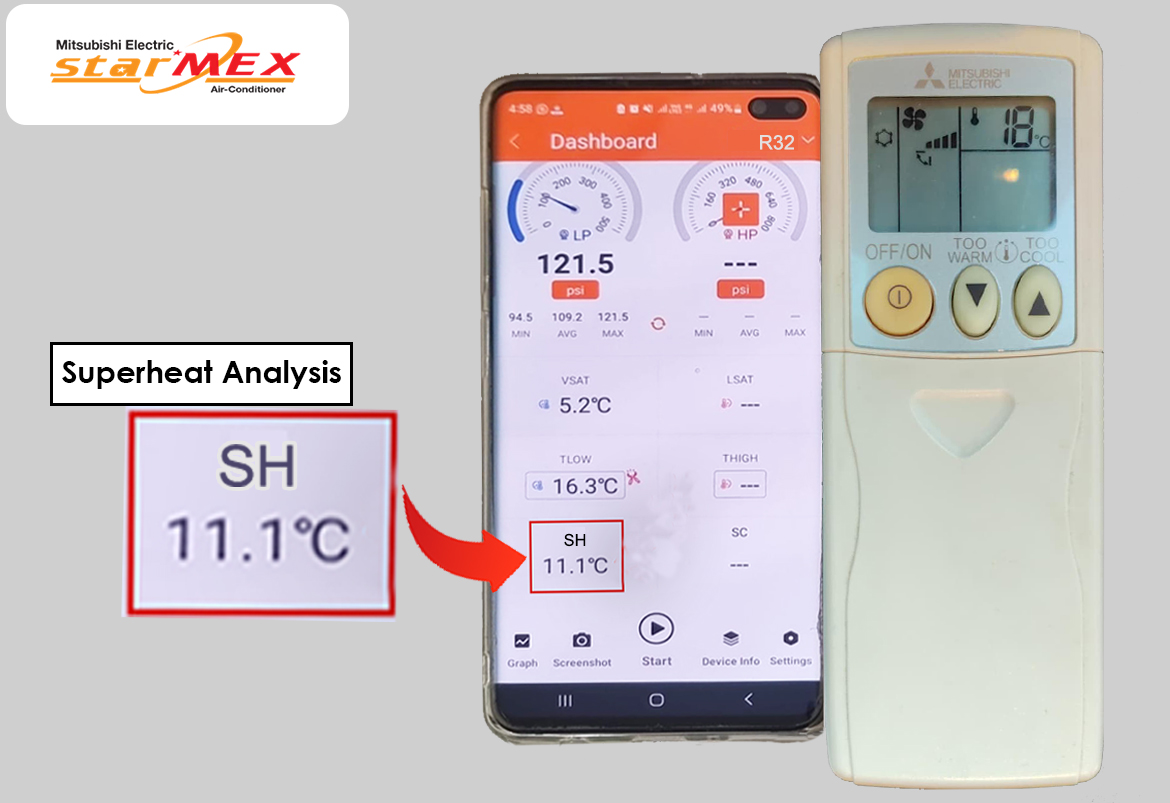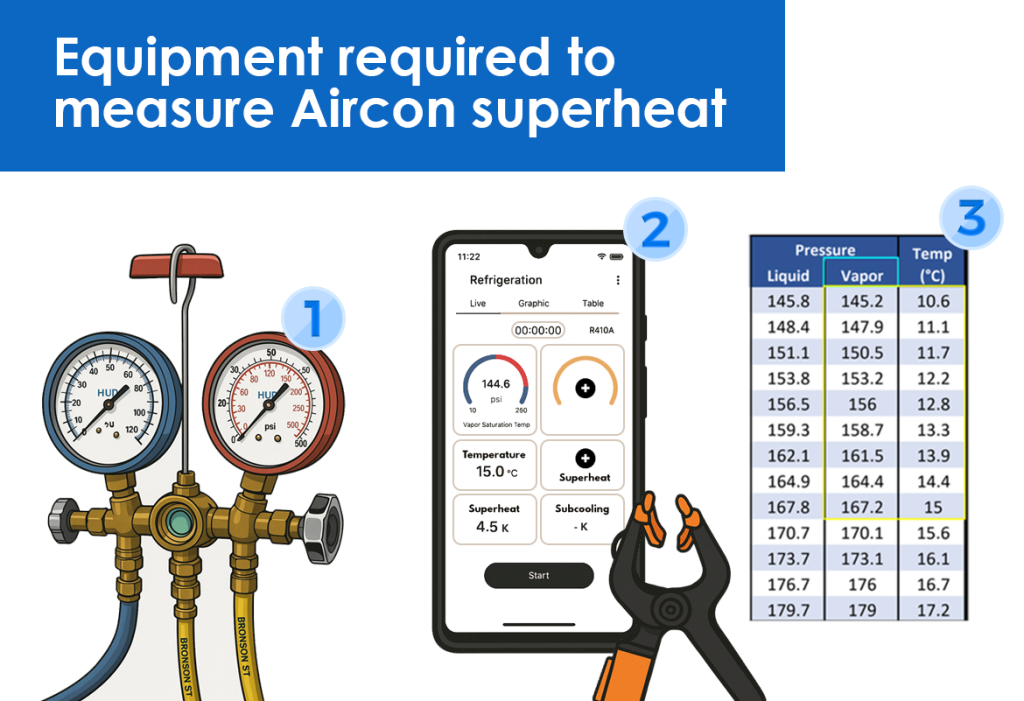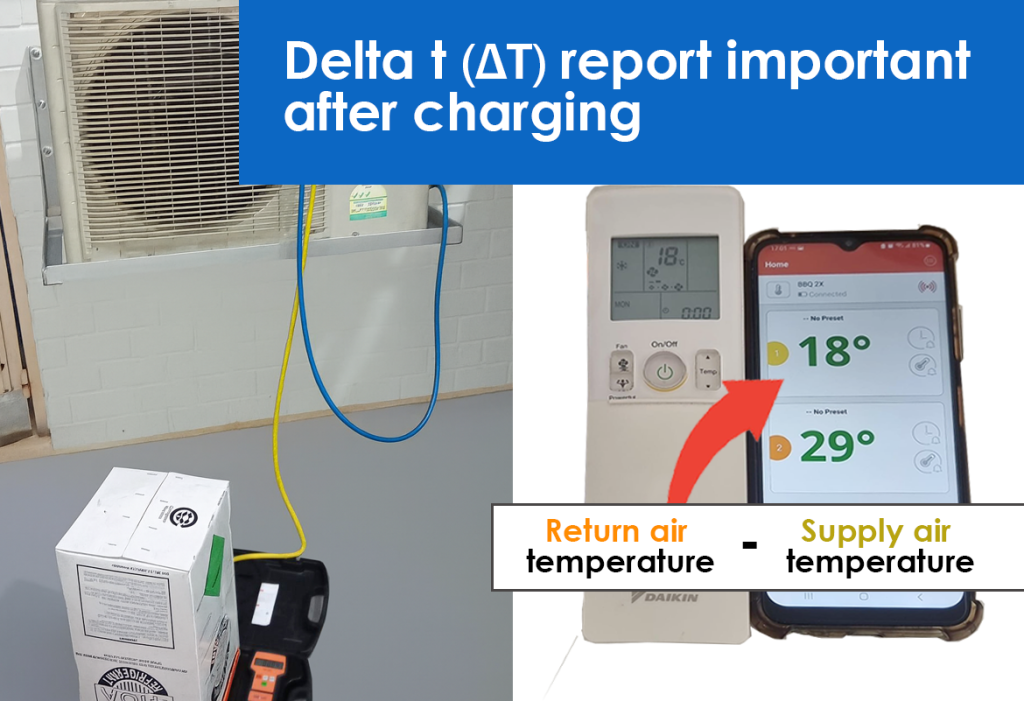The superheat method is a precise way to charge Mitsubishi System 3 air conditioning systems with fixed orifice or capillary tube systems, matching the system’s cooling capacity to the evaporator’s heat load. It involves comparing the actual superheat measured at the evaporator to a target superheat calculated based on ambient temperatures. The superheat method is particularly useful for systems with fixed metering devices (like piston valves) where subcooling is not a reliable indicator of the refrigerant charge.
Here’s how the superheat method works:
1. Determine Target Superheat:
- Measure dry bulb (ambient) and wet bulb (return air) temperatures.
- Use a superheat chart or calculation to find the target superheat for the system based on those temperatures.
2. Measure Actual Superheat of Mitsubishi System:
- Attach a thermometer and pressure gauge to the suction line of the Mitsubishi compressor. Convert the suction line pressure to a saturated temperature using a pressure-temperature chart.
- Subtract the saturated temperature from the actual temperature on the suction line to determine the superheat.
3. Compare and Adjust:
- Compare the actual superheat to the target superheat.
- If the actual superheat is below the target, add refrigerant until the actual superheat matches the target.
- If the actual superheat is above the target, remove refrigerant until the actual superheat matches the target.
4. Ensure Proper Airflow:
- Make sure there’s adequate airflow across the condenser and evaporator coils.
5. Check and Adjust:
- Continuously monitor and adjust the refrigerant charge until the actual superheat matches the target superheat.
Key Considerations for AC System, including Mitsubishi:
- Ambient Temperature: The target superheat is influenced by the ambient temperature.
- System Type: The superheat method is most accurate for systems with fixed metering devices.
- Instrumentation: Accurate temperature and pressure readings are crucial for proper superheat measurement.
- Safety: Always follow safety procedures when working with refrigerant.





Leave a Reply